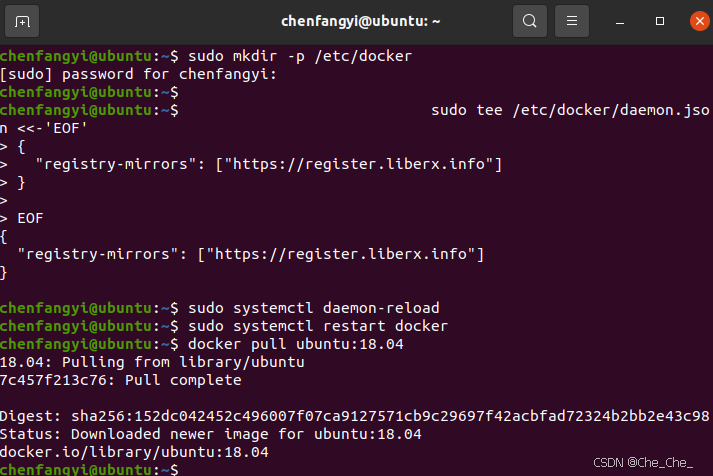目录
一. 友元 friend
1.1 概念
1.2 友元函数
1.3 友元类
1.4 友元成员函数
二. 运算符重载
2.1 概念
2.2成员函数运算符重载
2.3 成员函数运算符重载
2.4 特殊运算符重载
2.4.1 赋值运算符重载
2.4.2 类型转换运算符重载
2.5 注意事项
三、std::string 字符串类(熟悉)
一. 友元 friend
1.1 概念
定义:
类实现了数据的隐藏与封装,类的数据成员一般定义为私有成员,仅能通过类的成员函数才能读写。如果数据成员定义为公共的,则又破坏了封装性。但是某些情况下,需要频繁读写类的成员,特别是在对某些成员函数多次调用时,由于参数传递、类型检查和安全性检查等都需要时间开销,而影响程序的运行效率。
友元是一种定义在类外部的普通函数,但他需要在类体内进行说明,为了和该类的成员函数加以区别,在说明时前面加以关键字friend。友元不是成员函数,但是他能够访问类中的所有成员。
作用:
在于提高程序的运行效率,但是,他破坏了类的封装性和隐藏性,使得非成员函数能够访问类的私有成员。导致程序维护性变差,因此使用友元要慎用。
友元较为实际的应用是在运算符重载,这种应用可以提高软件系统的灵活性。
分类:
● 友元函数
● 友元类
● 友元成员函数
1.2 友元函数
友元函数是一种“声明”在类内,实际在类外的普通函数
#include <iostream>using namespace std;class Girl
{
private:int age;public:Girl(int age):age(age){}int get_age() const{cout << &age << endl;return 18;}// 1. "声明"友元函数friend void access_true_age(Girl&);
};// 2. 定义友元函数
void access_true_age(Girl& g)
{// 突破权限cout << &g.age << endl;cout << "真实年龄:" << g.age << endl;// 修改g.age = 18;cout << "修改后年龄:" << g.age << endl;
}int main()
{Girl g(45);cout << g.get_age() << endl;// 通过友元函数访问Girl的年龄access_true_age(g);return 0;
}
● 由于不属于类的成员函数,因此友元函数没有this指针,访问类的成员只能通过对象。
● 友元函数在类中的“声明”可以写在类的任何部分,不受权限修饰符的影响。
● 理论上一个友元函数可以是多个类的友元函数,只需要在各个类中分别“声明”。
1.3 友元类
当一个类B成为了另一个类A的友元类时,类B可以访问类A的所有成员。
需要注意的是:
● 友元关系是单向的,不具有交换性。
如果类B是类A的友元类,类A不一定是类B的友元类。
● 友元关系不具有传递性。
如果类C是类B的友元类,类B是类A的友元类,类C不一定是类A的友元类。
● 友元关系不能被继承。
#include <iostream>using namespace std;class A
{
private:string str = "A私有";// “声明”友元类friend class B;
};class B
{
public:void func(A& a){
// cout << this->str << endl; 错误:this是B对象不是A对象cout << a.str << endl;a.str = "我改了";cout << a.str << endl;}
};int main()
{A a;
// cout << a.str << endl; 错误B b;b.func(a);return 0;
}
1.4 友元成员函数
在友元类的任何成员函数中都可以访问其他类的成员,但是友元成员函数把友元范围限制在一个成员函数中。
例如,类B的某个成员函数称为了类A的友元成员函数,这样类B的该成员函数就可以访问类A的所有成员了。
#include <iostream>using namespace std;// 3. 因为第二步中用到了类A,提前声明类A
class A;// 2. 编写类B,并真正声明友元成员函数
class B
{
public:void func(A&);
};class A
{
private:string str = "A私有";// 1. 确定友元的函数格式并“声明”friend void B::func(A&);
};// 4. 类外定义友元成员函数
void B::func(A & a)
{// cout << this->str << endl; 错误:this是B对象不是A对象cout << a.str << endl;a.str = "我改了";cout << a.str << endl;
}int main()
{A a;// cout << a.str << endl; 错误B b;b.func(a);return 0;
}
二. 运算符重载
2.1 概念
如果把运算符看做是一个函数,则运算符也可以像函数一样重载。
C++中预定义的运算符的操作对象只能是基本数据类型。但实际上对于很多用户的自定义类型,也需要类似的运算操作、这时可以在C++中重新定义这些运算符,赋予已有运算符新的功能,使它能够用于特定类型,执行特定的操作。
可以被重载的运算符:
算术运算符:+、-、*、/、%、++、--
位操作运算符:&、|、~、^(位异或)、<<(左移)、>>(右移)
逻辑运算符:!、&&、||
比较运算符:<、>、>=、<=、==、!=
赋值运算符:=、+=、-=、*=、/=、%=、&=、|=、^=、<<=、>>=
其他运算符:[]、()、->、,、new、delete、new[]、delete[]
不被重载的运算符:
成员运算符“.”、指针运算符“*”、三目运算符“? :”、sizeof、作用域“::”
2.2成员函数运算符重载

#include <iostream>
using namespace std;class MyInt
{
private:int a;
public:MyInt(int a):a(a){}int get_int(){return a;}// + 运算符重载friend MyInt operator +(MyInt &i,MyInt &i2);friend MyInt operator ++(MyInt &i); // 前置自增friend MyInt operator ++(MyInt &i, int); // 后置自增
};// 友元函数 实现
MyInt operator +(MyInt &i,MyInt &i2)
{// int → MyInt 触发构造函数隐式调用return i.a + i2.a;
}// 前置自增
MyInt operator ++(MyInt &i)
{return ++i.a;
}// 后置自增
MyInt operator ++(MyInt &i, int)
{return i.a++;
}int main()
{MyInt int1(2);MyInt int2(int1); // 拷贝构造函数MyInt int3 = int1 + int2;cout << (int3++).get_int() << endl; // 4cout << int3.get_int() << endl; // 5return 0;
}
2.3 成员函数运算符重载
成员函数运算符重载相比于友元函数重载,最主要的区别在于,友元函数的第一个输出参数,在成员函数运算符重载中使用this指针代替。因此相同的运算符重载,成员函数运算符重载比友元函数运算符重载参数少一个。

#include <iostream>
using namespace std;class MyInt
{
private:int a;
public:MyInt(int a):a(a){}int get_int(){return a;}MyInt operator +(MyInt &i2);MyInt operator ++();MyInt operator ++(int);
};// 成员函数 类外实现
MyInt MyInt::operator +(MyInt &i2)
{// int → MyInt 触发构造函数隐式调用return this->a + i2.a;
}// 前置自增
MyInt MyInt::operator ++()
{return ++this->a;
}// 后置自增
MyInt MyInt::operator ++(int)
{return this->a++;
}int main()
{MyInt int1(2);MyInt int2(int1); // 拷贝构造函数MyInt int3 = int1 + int2;cout << (++int3).get_int() << endl;cout << int3.get_int() << endl;return 0;
}
2.4 特殊运算符重载
2.4.1 赋值运算符重载
除了之前学习的无参构造函数、拷贝构造函数、析构函数以外,如果程序员不手写,编译器就会给一个类添加赋值运算符重载函数。
#include <iostream>
using namespace std;class MyInt
{
private:int a;
public:MyInt(int a):a(a){}int get_int(){return a;}// 编译器会自动添加赋值运算符重载函数MyInt & operator =(MyInt &i){cout << "赋值运算符被调用了" << endl; // 编译器自动添加的赋值运算符重载函数不会打印这句话this->a = i.a;return *this;}
};int main()
{MyInt int1(2);MyInt int4(3);cout << int4.get_int() << endl;int4 = int1; // 赋值运算符重载cout << int4.get_int() << endl;return 0;
}
当类中出现指针成员变量时,默认的赋值运算符重载函数会出现类似于浅拷贝构造函数的问题,因此也需要手动编写解决“浅拷贝”的问题。
【面试题】一个类什么都不写,编译器添加了那些代码?
无参构造函数、拷贝构造函数、析构函数、赋值运算符重载函数
2.4.2 类型转换运算符重载
必须使用成员函数运算符重载,且格式比较特殊。
#include <iostream>
using namespace std;class MyInt
{
private:int a;string str = "hello";
public:MyInt(int a):a(a){}int get_int(){return a;}// 编译器会自动添加赋值运算符重载函数MyInt & operator =(MyInt &i){cout << "赋值运算符被调用了" << endl; // 编译器自动添加的赋值运算符重载函数不会打印这句话this->a = i.a;return *this;}// 类型转换运算符重载operator int(){return a;}operator string(){return str;}
};int main()
{MyInt int1(2);int a = int1;string str = int1;cout << a << endl;cout << str << endl;return 0;
}
2.5 注意事项
● 重载的运算符限制在C++语言中已有的运算符范围,不能创建新的运算符。
● 运算符重载的本质也是函数重载,但是不支持函数参数默认值设定。
● 重载之后的运算符不能改变运算符的优先级和结合性,也不能改变运算符的操作数和语法结构。
● 运算符重载必须基于或包含自定义类型,即不能改变基本数据类型的运算符规则。
● 重载功能应该与原有功能类似,避免没有目的的滥用运算符重载。
● 一般情况下,双目运算符建议使用友元函数进行重载,单目运算符建议使用成员函数进行重载。
三、std::string 字符串类(熟悉)
字符串对象是一个特殊类型的容器,专门设计用于操作字符串。
#include <iostream>
#include <string.h>
using namespace std;int main()
{string s; // 创建一个空字符串// 判断是否为空cout << s.empty() << endl; // 1// 隐式调用构造函数string s1 = "hello";cout << s1 << endl; // hello// 显式调用构造函数,等同于上面写法string s2("world");cout << s2 << endl;// ==、!=、<、> 都是判断编码cout << (s1 == s2) << endl; // 0cout << (s1 != s2) << endl; // 1cout << (s1 > s2) << endl; // 0cout << (s1 < s2) << endl; // 1// 拷贝构造函数string s3(s2); // string s3 = s2;cout << s3 << endl;// 参数1:char *源字符串// 参数2:保留的字符数string s4("ABCDEFG",3);cout << s4 << endl; // ABC// 参数1:std::string 源字符串// 参数2:不保留的字符数string s5(s2,3);cout << s5 << endl; // ld// 参数1:字符的数量// 参数2:字符的内容charstring s6(5,'a');cout << s6 << endl; // aaaaa// 交换cout << "原s5=" << s5 << " " << "原s6=" << s6 << endl; // 原s5=ld 原s6=aaaaaswap(s5,s6);cout << "s5=" << s5 << " " << "s6=" << s6 << endl; // s5=aaaaa s6=ld// 字符串拼接、连接string s7 = s5 + s6;cout << s7 << endl; // aaaaald// 向后追加字符串s7.append("jiajia");cout << s7 << endl; // aaaaaldjiajia// 向后追加单字符s7.push_back('s');cout << s7 << endl; // aaaaaldjiajias// 插入// 参数1:插入的位置// 参数2:插入的内容s7.insert(1,"234");cout << s7 << endl; // a234aaaaldjiajias// 删除字符串// 参数1:起始位置// 参数2:删除的字符数量s7.erase(2,5);cout << s7 << endl; // a2aldjiajias// 替换// 参数1:起始位置// 参数2:被替换的字符数// 参数3:替换的新内容s7.replace(0,3,"***");cout << s7 << endl; // ***ldjiajias// 清空s7.clear();cout << s7.length() << endl; // 0// 直接赋值初始化(隐式调用构造函数)string s8 = "hahaha";cout << s8 << endl;// 重新赋值s8 = "ABCDEFGH";cout << s8 << endl; // ABCDEFGH// 参数1:拷贝的目标// 参数2:拷贝的字符数量// 参数3:拷贝的起始位置char arr[20] = {0};s8.copy(arr,6,1);cout << arr << endl; // BCDEFG// C++string 到 c string 用到了C语言的strcpy// c_str C++的字符串转换成C语言的字符数组// c_str返回值类型是一个const char*char c[20] = {0};strcpy(c,s8.c_str());cout << c <<endl; // ABCDEFGHreturn 0;
}







![浅谈java异常[Exception]](https://i-blog.csdnimg.cn/direct/c722ff4f91534e96aee00c56be1caa78.jpeg)











